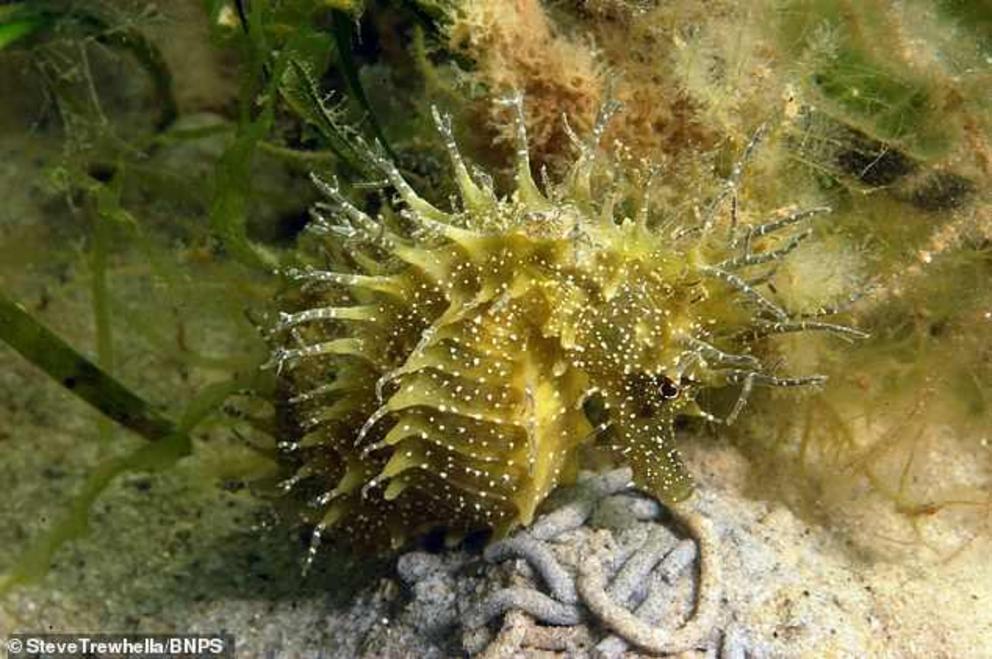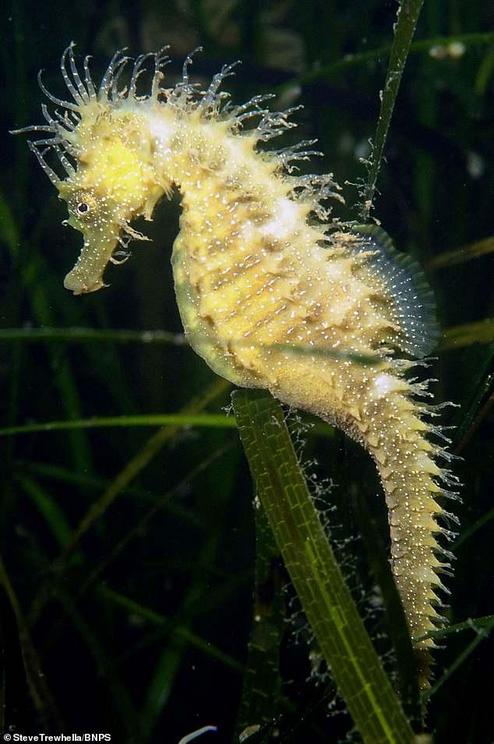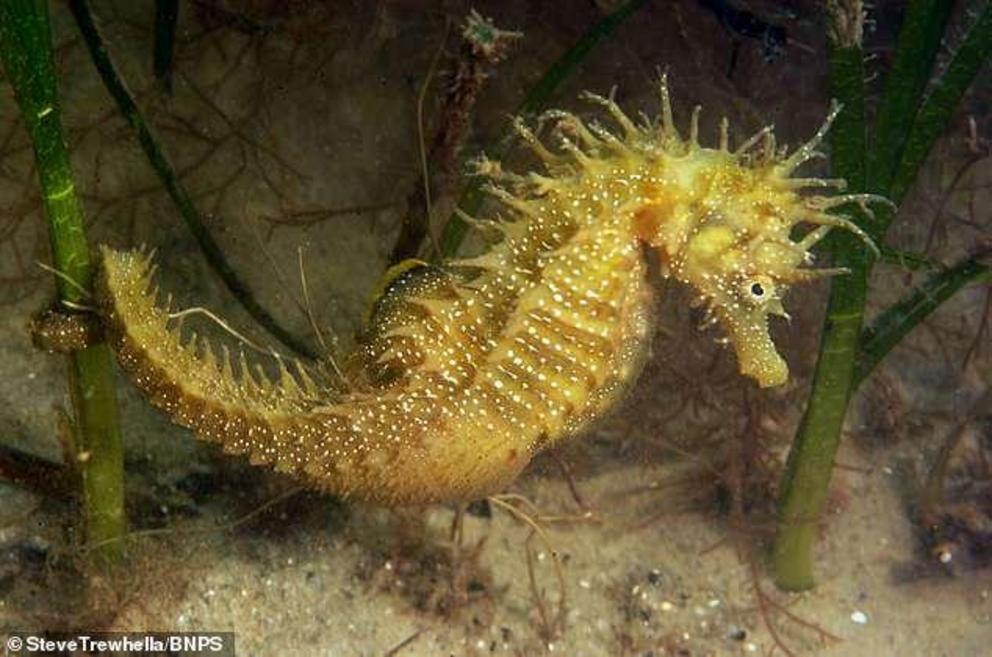The death of British seahorses
Native seahorses have all but disappeared from a popular British seaside spot because pleasure boats' anchors keep churning up their breeding grounds.
The bay in Dorset is the only place where both species of the sea creatures - the spiny and short-snouted varieties - found in our waters have been recorded together.
A conservation charity has found just one dead spiny seahorse in the bay this year however, an alarming drop from 10 years ago when 40 were recorded.
THE TWO SPECIES OF SEAHORSE NATIVE TO THE UK
There are two species of seahorse native to British waters: the short snouted and the spiny.
Both breeds grow to a maximum length of 15cm to 17cm, and tend to live in shallow, inshore waters.
British Seahorses can be found on the Shetland Isles, down the west coast of the UK, and along the south coast of England.
The main difference between the two breeds is the snout.
Spiny seahorses can also be distinguished by longer spines above the dorsal fin and on the head.
They can both change colour to match their surroundings and can even change colour to communicate emotions.
Source: The Seahorse Trust
Experts from The Seahorse Trust blame the decline on anchors from visiting pleasure boats churning up the delicate seagrass beds in Studland Bay, which provide a breeding ground for the creatures.
The trust has now made an application to the government to make the area, the size of six football pitches, a protected Marine Conservation Zone.
This will ban boat anchors being used and reverse damage to the habitat.
A decision by the government's department for environment, food and rural affairs (Defra) is expected in the next few months.
If successful, a committee would be set up to protect the site and measures could be introduced including environmentally-friendly moorings which pleasure boats would be expected to use.
The Seahorse Trust's director Neil Garrick-Maidment said: 'We need to protect the most important site for seahorses in the UK.
'The numbers have declined since 2008 and the fact that we have only found one dead seahorse this year is alarming and appalling. This site should be thriving and vibrant but it is now a bit of a desert.
'Over-use of boats on the site has fragmented the seagrass so the whole eco-system is breaking down.
'We are not having a go at professional boatspeople because they understand the situation, but there are other boat people around with very little sea worthy experience around who drag their anchors along the seabad and this destroys the habitat.
'We're not calling for boats to be banned from the site, but it would be beneficial if environmentally-friendly moorings could be put in for boats so that anchors don't drag along the seabed.
'We've submitted a formal application to the government and it is now in their hands.
'There are seahorses living in deeper waters off Dorset so they may return to the site if we can reverse damage to their habitat.'

Studland Bay in Dorset (pictured) is the only place in the country where both native species of the sea creatures have been recorded together

The trust has now made an application to the government to make the area a protected Marine Conservation Zone to protect both species (pictured is a spiny seahorse)
The trust, which works to preserve the embattled species, carefully logs each seahorse with photo IDs, revealing individual markings on their heads.
The markings are as individual as fingerprints, ensuring an accurate count.
The spiny seahorse, or Hippocampus histrix in Latin, grows to about six inches.
Unlike most other marine creatures, male seahorses give birth to live young after the female deposits hundreds of eggs in its pouch during the mating process.
The male carries the eggs for around 30 days before it goes through up to 12 hours of contractions and releases the tiny babies into the sea.
Spiny seahorses live in shallow weedy areas, but move out to deeper water in the winter to escape rough weather.
They arrive in Studland Bay to breed in May and then disappear in the autumn.
There are 50 Marine Conservation Zones in waters around England which protect nationally important, rare or threatened habitats and species.

The trust, which works to preserve the embattled species, carefully logs each seahorse with photo IDs, revealing individual markings on their head (pictured is a spiny seahorse)
In 2008, both British seahorse species gained protection as named species under the Wildlife and Countryside Act.
It is illegal to kill, take or disturb seahorses in British waters.
Mr Garrick-Maidment added: 'The affected area is owned by Crown Estates who we have approached a few times and they have told us without a doubt they have never approved a single mooring on the site.
'However, when we asked them to do something about it, they weren't interested.
'I think with seahorses because they are in the sea it is a case of out of sight, out of mind.
'If Studland Bay was on land and seahorses were great crested newts there would be hell to pay if nothing was done.
'There is no doubt in my mind that the reason is the disintegration of the sea grass beds caused by the chains and anchors of illegally-moored boats.
'We have never called for boats to be banned from the site so it is wrong for the argument to be twisted that way.'

Seahorses (pictured, a spiny seahorse) have all but disappeared from a popular British seaside spot because pleasure boat anchors keep churning up their breeding grounds
Video can be accessed at source link below.
